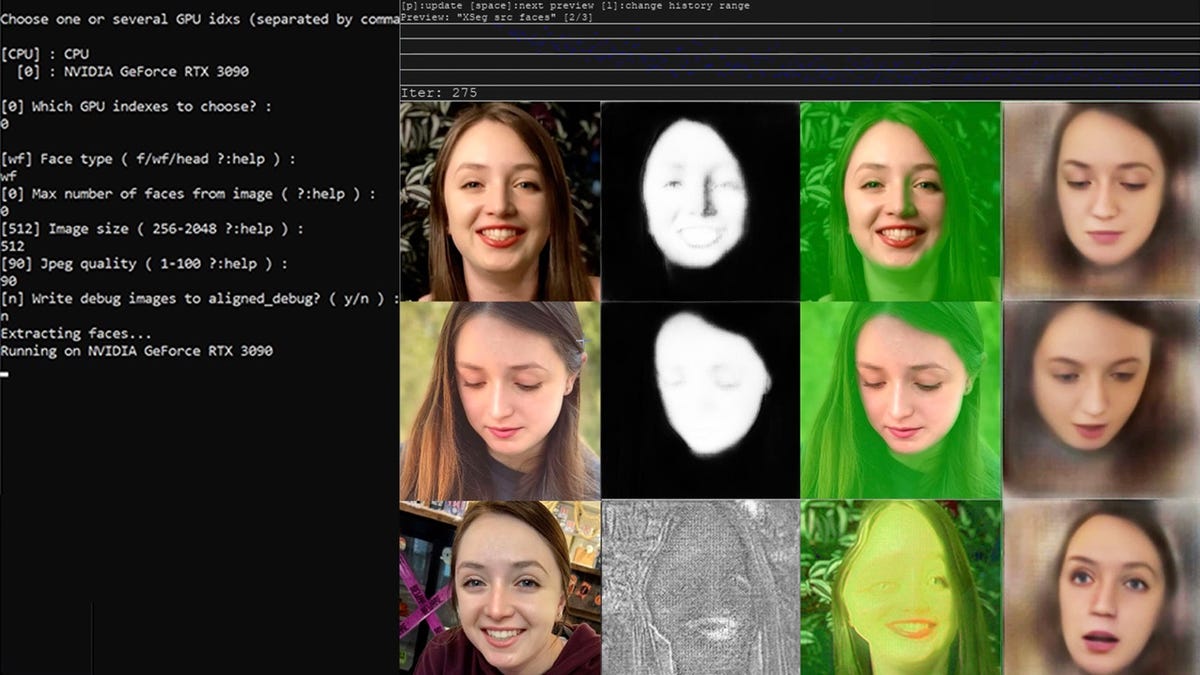- AIdeations
- Posts
- Navigating AI: From Workplace Revolution to Battling Cancer
Navigating AI: From Workplace Revolution to Battling Cancer
The Ever-Evolving Landscape of Artificial Intelligence and What It Means for Our Future


Welcome to the AI frontier, intrepid explorer! Strap in, for we've mined the digital cosmos to bring you today's shiniest AI nuggets!
TL;DR 📌:
1. The Chatbot Era: 70% want AI to ease their office burdens; by 2025, 90% of companies might be dancing with Generative AI. But beware: chatbots are advancing, possibly outpacing humans in the white-collar arena. Watch this space!
2. SEO’s Sunset? SEO, that $68 billion industry, faces an existential threat from Generative AI. Google's algorithms could become the maestros of direct answers, making the SEO song a bit out of tune.
3. Robocalls Reloaded: Forget simple spam! AI's giving robocalls a devious upgrade, mimicking voices you trust. Pro tip: Have a secret phone "password" with loved ones.
4. AI vs. Cancer: AI's taking the fight to cancer, from early detection to speeding up drug discoveries. By 2030, expect the health AI market to skyrocket to $188 billion.
5. The College Conundrum: Some youths ponder if staying in school means missing the AI gold rush.
6. Quick Bites: Robot hands rivaling human dexterity, victims battling deepfakes, schools hiring AI chatbot execs, and black market AI chatbots emerge.
7. Research Spotlight: Dive into the breakthroughs of "Brain Decoding" – envisioning our visual perceptions in real-time.
Stay ahead, stay informed, and above all, stay curious! 🌌🔍
📰 News From The Front Lines
📖 Tutorial Of The Day
🔬 Research Of The Day
📼 Video Of The Day
🛠️ 6 Fresh AI Tools
🤌 Prompt Of The Day
🐥 Tweet Of The Day
The Chatbot Uprising: AI's Workplace Domination
Illustration of a diverse group of professionals in a stylized office setting, engrossed in discussion around a glowing chatbot icon.
The fantasy of an AI-controlled office, once confined to the realm of sci-fi, is taking shape. Recent data from Microsoft's work trend index showed an astounding 70% of the 31,000 global respondents are craving AI intervention to lighten their workload. Microsoft’s takeaway? We're about to witness an "AI renaissance" in the workplace.
Now, imagine this: it's 2025. You walk into the office, greeted not by Joe from Accounting, but by Generative AI Joe who assists in crunching numbers at a pace the human Joe could only dream of. The Conference Board's latest survey reveals this isn't so far-fetched. Many employees are already co-working with generative AI, leaning on AI for tasks ranging from writing assistance to data analysis. Mary Mesaglio, a Gartner analyst, dropped a bombshell by saying, "Come 2025, 90% of companies globally will be buddying up with gen AI."
However, things get intriguing when we talk about AI autonomy. A recent narrative from the New York Times hinted at chatbots transforming into autonomous agents, potentially outpacing human employees in white-collar jobs. Jeff Clune from the University of British Columbia warns, "This is a double-edged sword for society."
Jack Clark, Anthropic’s cofounder, drew attention to SWE-bench, a benchmark aimed at assessing how large language models (LLMs) like ChatGPT and Claude2 perform complex tasks. The catch? Neither performed spectacularly, suggesting that we're not quite ready to hand over the keys to AI. But with the rumor mill churning about OpenAI's potential autonomous agent built on GPT-4, the trajectory seems to be set.
AI's footprint in our professional lives is evident. A personal tale: recently, I tapped into gen AI to launch a book for a non-profit I've been a part of for a decade. AI chopped down what could’ve been days of manual labor into mere hours. It was like being the maestro of an AI orchestra, with each assistant contributing its part. But as AI tools evolve, the big question looms - will we need as many maestros as we have today?
The future? A puzzle, with AI pieces yet to fit. As AI autonomy gains momentum, it’s a challenge riddled with the uncertainties of job displacement and ethical dilemmas. The reality is, our countdown to adjust and adapt is ticking down.
While the vision of an AI-sprinkled future comes with its set of utopian dreams and dystopian nightmares, one thing's evident: staying curious, adaptable, and in-the-know is our best bet. And for those who are part of the Aideations reader-base, congrats - you're already a step ahead. Stay curious, folks. The future awaits. 🤖🚀

The Decline of SEO in the Age of AI

Illustration of a once-bustling SEO office with cobwebs and outdated technology, while outside, a vibrant cityscape showcases AI-driven digital solutions.
Imagine a world where an industry, after 25 years of solid growth and raking in $68 billion, suddenly stares into the abyss because of advancements in AI. This might just be the reality for SEO.
For over two decades, everyone – from blogs and news outlets to major corporations – has been hooked on SEO. It's been the magic potion to climb Google's rankings and grab that sought-after attention. But there's a new kid on the block: generative AI, and it might just be crashing the SEO party.
Big tech giants like Google and Microsoft are all in on this. With AI tools akin to ChatGPT, users won't be scrolling through endless links. Instead, they'll be handed direct answers pulled from the vast expanse of the internet. So, if someone's planning a trip to Destin, Florida and types in a request for a three-day itinerary, Bing AI, for instance, might just dish out a ready-to-go plan. No more diving deep into Yelp reviews or blog suggestions.
Now, putting on the speculative hat: the future of SEO in this AI-driven landscape might not be so rosy. True, older generations might not switch their search habits overnight, but the tide is turning. Many are using platforms like Google mainly for pinpointed searches, skipping the broad queries.
The shift towards generative AI could mean businesses sidestepping traditional SEO strategies. If the audience can be reached faster and more efficiently with AI, the appeal of pricey SEO agencies could wane. The age-old practice of link-building might be in for a rude awakening.
But here's the twist. With AI-powered answers becoming commonplace, there's potential for search engines to embed more sponsored content. If that happens, the golden era of organic reach might just be history. Sponsored content might become the go-to, making it even trickier for organic listings.
Let's talk numbers. SEO was on track to soar to $129.6 billion by 2030. But that was pre-generative AI. Considering that a whopping 58% of Google's 2022 revenues (that's $162.5 billion for those keeping score) stemmed from Google Ads, it's safe to say big tech won't be sitting idle. They're bound to devise new monetization strategies centered around AI.
However, all that glitters isn't AI gold. Current AI systems have their pitfalls. They can, at times, produce erroneous, copied, or even fabricated answers. So, while the days of traditional SEO might be numbered, it's not game over just yet.
Bottom line? The SEO game is changing, and fast. While it might not vanish into thin air, a metamorphosis is on the horizon. As for those in the SEO business, evolving with the times won't be optional – it'll be survival. Welcome to the new age, where adaptation isn't just key; it's the only way forward.

Robocalls Go High Tech with AI: What You Need to Know
Illustration of a modern living room where a family of diverse descent looks surprised as their home phone displays a digital AI avatar, representing a robocall.
Ah, robocalls. Everyone's least favorite interruption. The audacity of these digital irritants used to be just cold, annoying recordings. Now, they're upping their game. They've not only become more prevalent but also a lot smarter.
Picture this: Your phone rings, and it's your spouse or your boss, urgently asking for help. But wait! It might not actually be them. Thanks to AI advancements, scammers can now recreate voices with unnerving precision, making it difficult to differentiate between genuine and deceptive calls.
Let's dive in a bit. A chunky 52% of Americans are generously sharing their voices online. Scammers are taking a free pass and using this treasure trove of vocal patterns to mimic voices using something called an Interactive Voice Response (IVR), or as we cool kids like to call it, "vishing". Think of it as the voice version of phishing.
Gone are the days when you'd trust a call just because the voice sounds familiar. Jonathan Nelson of Hiya Inc. gets nostalgic about the times when phone systems were all about trust. We've traded in our copper wires for digital signals, but sadly, the trust got lost in translation.
Now, let’s sprinkle some more salt on the wound. A whopping one in four non-contact calls are just spam. But here's the real kicker: Generative AI is making spam attacks more mainstream. Instead of investing tons of resources on spear phishing, scammers can just let AI do the heavy lifting.
But it's not all gloom and doom! Companies like McAfee and Hiya are suited up, ready to face off against these AI tricksters. They're studying AI scam patterns, kinda like giving phone numbers a credit history. The aim? Block 'em before they get to you.
And while our ever-reactive government is trying to play catch-up with AI-enhanced robocalls, Kristofor Healey, a former Homeland Security agent and our very own telefraud superhero, warns that we're going to see a surge in these cases.
So, what’s the way out? Good ol' education. Business and consumer education are where it's at. If you're running a business, teach your employees about deepfake audio spam. If you're just minding your own business, be wary of what you share online. A pro-tip from McAfee’s CTO, Steve Grobman: establish a secret validation word with your close ones. It's like a password but for phone calls. And if someone says they're calling from a company? Double-check by calling the official number.
In the end, though, the solution might be simpler than we think. Healey, our telefraud vigilante, has an entertaining approach: Keep the spammers on the line as long as possible. It’s a small, yet effective way to fight back, one call at a time.

AI's Game-Changing Role in Battling Cancer

Illustration of a medical laboratory with diverse scientists examining a large holographic DNA strand, with AI-driven algorithms highlighting cancer cells.
When we talk about landmark innovations in the fight against cancer, AI is firmly under the spotlight. In 2020, the U.S. logged over 1.6 million new cancer cases and over 600,000 deaths. Enter AI, poised to revolutionize healthcare. By 2030, we're expecting the healthcare AI market to scale from $11 billion (2021) to a staggering $188 billion.
Here's how AI is reshaping the narrative:
1. Early Detection:
MIT and Mass General Cancer Center have developed Sybil, an AI tool trained on chest scans of individuals aged 50-80 with a history of smoking. Sybil's primary role? Predicting the risk of lung cancer development within six years. Early detection can drastically enhance treatment efficacy, making tools like Sybil crucial.
2. Accelerating Drug Discovery:
The drug development process is notoriously time-consuming. Etcembly, an Oxford-based biotech firm, is harnessing the power of AI to expedite drug discovery, focusing primarily on immunotherapy. Their AI-driven process introduces a novel approach where immune cells are paired with cancer cells, prompting the body's defenses to target malignant cells.
3. Personalized Treatments:
CHARM is redefining surgical procedures. Instead of waiting days or weeks to decode a tumor's DNA, CHARM gets the job done in real-time. Its accuracy rate stands at 93%, particularly in identifying molecular mutations. This real-time data allows for bespoke treatment strategies, amplifying the chances of successful outcomes.
Yet, the AI journey isn't without roadblocks. Data bias remains a significant concern. If AI relies on skewed data, it can inadvertently prioritize certain populations over others. Moreover, the opacity of some AI tools, often dubbed "black boxes", obscures their decision-making processes. This can be problematic, especially if the data set isn't diverse, potentially leading to inaccurate diagnoses.
AI's potential in the realm of cancer treatment is undeniable. Though challenges persist, with firms like Etcembly steering the ship, the horizon looks promising. The goal? A world where AI plays a critical role in decimating this formidable disease.


Implement Story Brand in Minutes


Authors: Yohann Benchetrit, Hubert Banville, Jean-Rémi King (FAIR, Meta, Laboratoire des Systèmes Perceptifs, École Normale Supérieure, PSL University)
Executive Summary:
In the last half-decade, advancements in generative and foundational AI systems have significantly enhanced our capability to decode brain activity. A particular focus has been on visual perception, which is now decipherable from functional Magnetic Resonance Imaging (fMRI) with high fidelity. Despite this progress, fMRI's limited temporal resolution (~0.5 Hz) restricts its real-time applications. This research introduces an innovative approach leveraging magnetoencephalography (MEG), a tool that captures brain activity at a much higher temporal resolution (~5,000 Hz). The proposed MEG decoding model employs contrastive and regression objectives and is composed of three key modules: image-based pretrained embeddings, an end-to-end trained MEG module, and a pretrained image generator. The findings reveal a 7-fold enhancement in image-retrieval over traditional linear decoders. Additionally, the study identifies that DINOv2, a contemporary foundational image model, optimally decodes late brain responses to images. The data further suggests that MEG signals mainly encapsulate high-level visual features, while 7T fMRI can capture both high and low-level features. This research marks a significant milestone towards real-time decoding of the intricate visual processes in the human brain.
Pros:
1. Introduces a novel approach using MEG, which offers a much higher temporal resolution than fMRI.
2. Demonstrates a 7X improvement in image retrieval over traditional methods.
3. Utilizes state-of-the-art foundational image models like DINOv2 for optimal results.
4. Paves the way for real-time visual perception decoding, bringing neuroscience and AI closer.
Limitations:
1. MEG signals seem to primarily capture high-level visual features, missing out on some low-level details that 7T fMRI can retrieve.
2. The real-world applicability and scalability of the proposed model might need further validation.
Use Cases:
1. Real-time brain-computer interfaces that can respond to visual stimuli.
2. Advanced neuroimaging for medical diagnostics and therapeutic interventions.
3. Enhancing our understanding of visual perception and cognitive processes.
Why You Should Care:
Understanding and decoding real-time visual perception opens doors to a myriad of applications in neuroscience, medicine, and technology. The fusion of AI and neuroimaging, as presented in this research, brings us a step closer to unraveling the intricacies of the human brain, which has vast potential benefits for society, from improving medical procedures to developing more intuitive brain-computer interfaces.


CoachVox - Clone yourself with AI trained on your content and style. Coach and mentor your audience, add value to your clients and empower your team.
Yoodli - Improve your communication skills with private, realtime, and judgement free speech coaching on your online meetings - powered by AI
Aico - Create Shorts from YouTube Links with Just 3 Clicks
Legal Now - Create or Review Your Legal Documents with Lawyer-Grade AI
Morph Studio - Join their Beta Discord channel. Text-to-Video AI Magic, manifest your creativity through your prompt!
Typeset - A design tool like you’ve never seen before. It combines AI and design principles to generate visual content that looks amazing – in seconds. Focus on your story to tell, and leave the design to Typeset.

Todays Prompt Comes From Our Friend at The AI Solopreneur
I need your help with startup advice.
I am working on an idea which involves [YOUR LEAN PRODUCT IDEA].
For context,[INSERT CONTEXT]
My audience consists of [AUDIENCE CONTEXT]
Now, please answer me the following things:
1) Come up with 10 ideas on how can I construct a low-cost MVP for this
Constraints:
- Costs $0 to build
- Takes less than 1 hours to build
- Can be built without code
2) Ideas on how I can Measure success of the MVP
Guiding questions:
- What's the OMTM (one metric that matters) of this MVP?
- How can I measure user engagement
- What outcomes could mark a successful vs unsuccessful test? (Draw a line in the sand)
3) Ideas on how I can get customer feedback for this MVP
4) Come up with 10 ideas I can test with my audience on how I can add more value to the core concept based on my audience
You can easily create animated characters.
No more 10+ hours of complex video editing.
Here's how to create Animated AI character with Dall-E 3 in 2 minutes:
— Abhishek (@HeyAbhishekk)
1:22 PM • Oct 22, 2023





